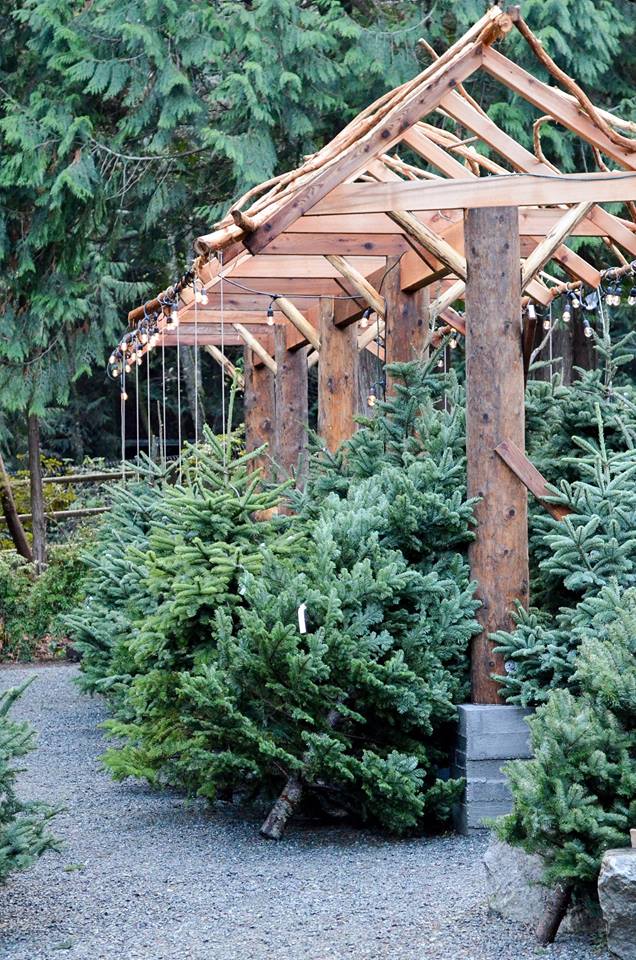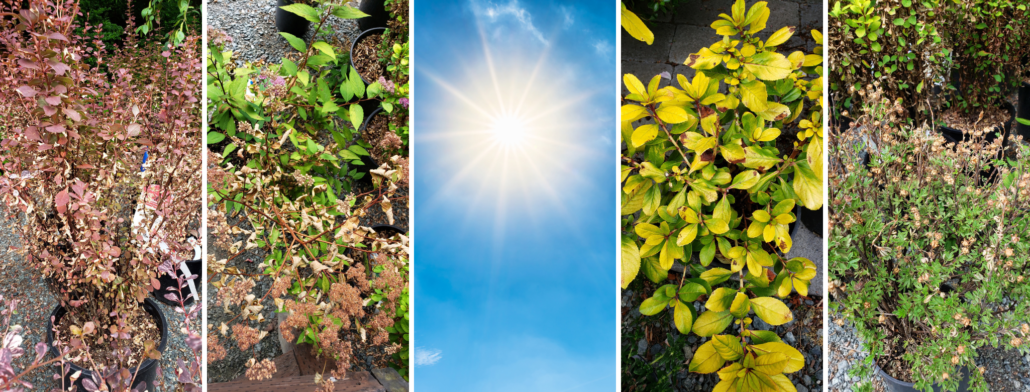Caring for your fresh cut and living Christmas Trees
Caring for your freshly cut Christmas Tree
Follow these tips to keep your real Christmas tree as fresh as possible. If you are unable to set up your tree when you get home, store it in a cool sheltered area like the North side house, away from the wind and sun. With proper care, your Christmas tree will bring warmth and pleasure throughout the holiday season!

1. Make a fresh cut.
If you didn’t have us make a fresh cut at the Nursery, before you bring the tree into your home and place it in a stand, re-cut the trunk at least one inch from the bottom just before putting it in the stand. Even if you just cut it on a choose and cut farm, this re-opens the tree stem so it can drink water.
2. Choose a spot away from heat sources.
Heat sources like heat registers, space heaters, fireplaces, wood stove, televisions, computer monitors, etc. speed up evaporation and moisture loss of the tree.
3. Water immediately.
After making the fresh cut, place the tree in a large capacity stand with warm water. The stand you use should hold at least one gallon of fresh water.
4. Don’t add anything to the water.
Research has shown that plain tap water is the best. Some commercial additives and home concoctions can actually decrease a tree’s moisture retention and increase needle loss.
5. Check water level daily.
Do not allow the water level to drop below the fresh cut or the stem will reseal and be unable to drink. Christmas trees are very thirsty! It is not unusual for a tree to drink 2 gallons of water the first day it is the stand.
Living Christmas Trees
A Holiday Memory to Enjoy Year after Year!
Tired of investing in a beautiful conifer every December, only to throw it out in January? Consider purchasing a living Christmas tree to plant in your landscape after the holidays!
Tips for Success
1. Only keep living Christmas trees inside your home for a maximum of 7-10 days. We recommend moving the potted tree into your garage or other protected area for a week before moving it indoors. Likewise, after the holiday it’s a good idea to move it back to the garage for a week before planting. This allows the tree to adjust to the sudden change in temperature!
2. Living Christmas trees need water every day, but not too much! Once inside your home, an eight-foot conifer will enjoy about a quart of water per day, broken up into smaller doses. One way to do this is to sprinkle ice cubes over the root ball: they will melt slowly and water the tree a little at a time.
3. Use low-heat electric lights, and position the tree away from heaters to avoid drying out.
4. Choose an appropriate location to plant your tree: plenty of sunlight and well-draining soil are the two primary needs of most conifers.
5. Don’t fertilize until spring. Fertilizing during transplanting can stress the tree.
6. Water your transplanted tree. Keep an eye on your new tree for the first couple summers, and water it during periods of heat and drought. As the root system becomes more established, conifers become more independent and drought-tolerant.
Happy Holidays!


